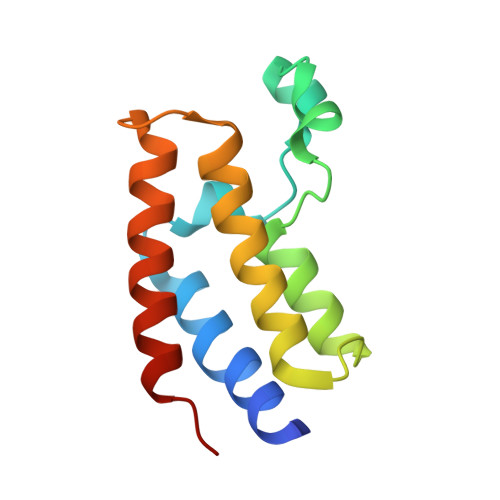Bivalent BET Bromodomain Inhibitors Confer Increased Potency and Selectivity for BRDT via Protein Conformational Plasticity.
Guan, X., Cheryala, N., Karim, R.M., Chan, A., Berndt, N., Qi, J., Georg, G.I., Schonbrunn, E.(2022) J Med Chem 65: 10441-10458
- PubMed: 35867655
- DOI: https://doi.org/10.1021/acs.jmedchem.2c00453
- Primary Citation of Related Structures:
7L9M, 7LA9, 7MR5, 7MR6, 7MR7, 7MR9, 7MRA, 7MRB, 7MRC, 7MRD, 7MRG, 7MRH, 8CZA - PubMed Abstract:
Bromodomain and extraterminal domain (BET) proteins are important regulators of gene transcription and chromatin remodeling. BET family members BRD4 and BRDT are validated targets for cancer and male contraceptive drug development, respectively. Due to the high structural similarity of the acetyl-lysine binding sites, most reported inhibitors lack intra-BET selectivity. We surmised that protein-protein interactions induced by bivalent inhibitors may differ between BRD4 and BRDT, conferring an altered selectivity profile. Starting from nonselective monovalent inhibitors, we developed cell-active bivalent BET inhibitors with increased activity and selectivity for BRDT. X-ray crystallographic and solution studies revealed unique structural states of BRDT and BRD4 upon interaction with bivalent inhibitors. Varying spacer lengths and symmetric vs unsymmetric connections resulted in the same dimeric states, whereas different chemotypes induced different dimers. The findings indicate that the increased intra-BET selectivity of bivalent inhibitors is due to the differential plasticity of BET bromodomains upon inhibitor-induced dimerization.
Organizational Affiliation:
Department of Medicinal Chemistry and Institute for Therapeutics Discovery and Development, College of Pharmacy, University of Minnesota, 717 Delaware Street, Minneapolis, Minnesota 55414, United States.

















